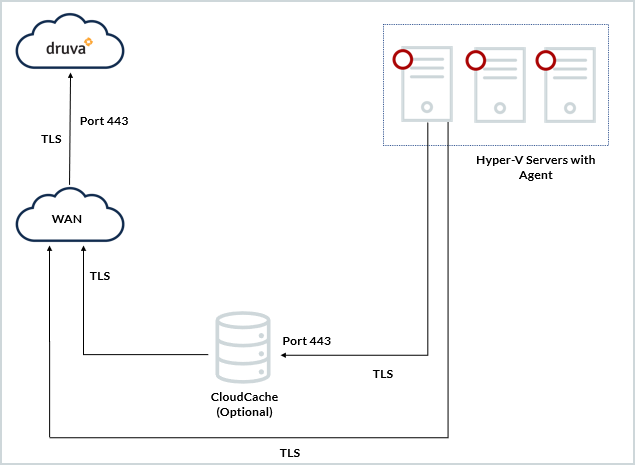System requirements for Hyper-V
 Business
Business  Enterprise
Enterprise  Elite
Elite
Software requirements for Hyper-V
This section contains information about the Windows server that Druva supports.
|
Operating System |
Editions |
|---|---|
|
Windows |
|
Note: If you are using SCVMM for managing virtual machines on Windows Server 2008 R2 hosts:
- When you activate the Hybrid Workloads agent, select the type as standalone or cluster (based on your setup). Do not select the type as scvmm to register your hosts through SCVMM.
- Druva does not support registration of Microsoft Windows Server 2008 R2 hosts through SCVMM.
This section contains information about the Azure Stack HCI that Druva supports.
|
Operating System |
Editions |
|---|---|
|
Microsoft Azure |
Azure Stack HCI v21H2
|
Partition type and file systems for file-level restore (FLR)
Windows:
-
Primary
-
Extended
-
Basic disk (Partition type: MBR/GPT)
-
Dynamic disk (Partition type: MBR. (simple/spanned volume)
Linux:
LVM (Simple/Spanned/Mirror/Stripped)
File-systems:
-
NTFS
-
FAT
-
FAT32
-
Ext2/3/4
-
XFS
Software requirements for FLR proxy
Before you deploy and activate the FLR proxy, ensure that following system requirements on the Hyper-V host are met for the proxy:
- Memory: 2 GB
- vCPUs: 2
This is a recommended configuration for two restore jobs. If you want to run multiple restore jobs, increase the memory and number of vCPUs.
Hardware requirements for Hybrid Workloads agent on Windows
See, Hardware requirements.
Ports and communication protocols for Druva
Druva communicates with your hosts to backup and restore data on your hosts. Druva talks to your Hyper-V host through ports and protocols that are secure for communication and transition of data.
Druva uses Transport Layer Security (TLS) protocol for establishing the connection and initiating communication between Druva components and your Hyper-V hosts.
The following diagram depicts the ports and communication protocols that are used by Druva for secure connection and communication during the backup and restore operations.

Related video

